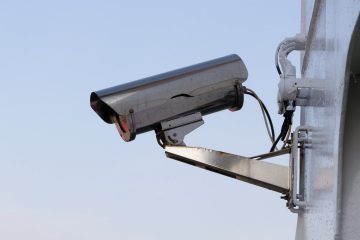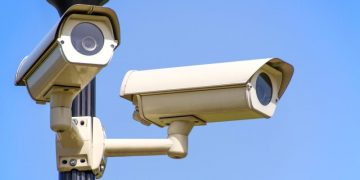Your Home Alarm System Won't Protect You Unless You Take Care of Its Security First

Alarm systems must be secured just like other IoT devices in your home. In fact, alarm systems need to be protected even more as they are responsible for the security of our homes and not just our virtual safety. Having it installed and picking a company that would react to its alerts is not enough. Cybersecurity specialists recommend taking extra precautions, starting with, setting up a strong password and keeping up with your security system’s updates. In this article, you can find more tips that will help you protect your security system so it could do its job. Also, we discuss why it is important to secure such IoT devices and what could happen if you fail to do it. Therefore, whether you are about to install your first security system, or you already have one, we encourage you to read our full report if you want to feel truly safe at your home.
Table of Contents
Why it is important to secure your home security system?
For instance, if your unprotected security system comes with cameras, hackers might be able to watch you and your kids, record your conversations, and talk through the cameras’ speakers. As a result, the attackers may know when you are not at home, manage to record sensitive information, and traumatize your loved ones, especially children.
Moreover, if hackers find a weakness in your smart home security system, they could misuse it to hack your home network and various other IoT devices connected to it. If this happens, the hacked IoT devices could be used to gather information, for DDoS attacks, to inject malicious applications, and so on. Not to mention, the attackers could be able to intercept alerts and even turn off your security system. There are lots of scenarios, and what could happen may depend on what kind of devices you have as well as how little they are protected.
What could happen if you leave your security system vulnerable?
We believe that the best way to explain what kind of risks users could be facing by overlooking the security of their alarm systems is to provide examples of situations that have already happened to someone. Therefore, below, we present three different cases that portray what can happen to users who do not take the security of their IoT devices seriously.
A couple from Wisconsin was terrorized by hackers who took over some of their smart home devices, including microphones and speakers of their home security cameras, in November, 2019. The virtual intruders played vulgar music as well as talked with the victims through their Google Nest cameras. Also, hackers were able to access their Google Nest thermostat and set it to 90 degrees, which made the situation even more unbearable. While victims blamed the hacked IoT devices’ providers, Google announced that Nest was not breached and no customer data that could have helped cybercriminals was leaked. The company explained that victims might have used breached or weak passwords and did not enable Two-Factor Authentication that could have prevented the attack.
A few years ago cybersecurity specialists identified a vulnerability in SecurView cameras provided by TRENDnet. These IoT devices were marketed as both security cameras and baby monitors. However, they failed to protect their users as it was discovered that anyone who was able to get the IP addresses of these cameras could look through them or even record sounds. If this was not already enough, researchers also found that the company had been transmitting their customers’ login information over the Internet without encrypting it first. This could have allowed attackers to easily obtain the transmitted data. While in this case it is the company that failed to provide users with secure IoT devices, consumers could have stopped their data from being leaked by taking extra precautions such as protecting their home network with a VPN.
A more recent event during which Wyze, a company that provides security cameras, accidentally leaked data of 2.4 million users, took place in December, 2019. Unlike the previously discussed incident with TRENDnet cameras during which users’ data was being carelessly transmitted over the Internet, Wyze kept their consumers’ information on a server that was unsecured for almost a whole month due to human error. Cybersecurity experts say that the exposed server included data like usernames, passwords, camera nicknames, cameras’ firmware information, API tokens for iOS and Android, and more. Obviously, with such information hackers could easily take over security cameras, spy on users, or even gain access to their home network and other IoT devices connected to it. Sadly, there is little you can do when it comes to data breaches. All you can hope is that your chosen smart home security system’s providers will be able to prevent them or will react to them in time to reverse damage.
How to secure a smart home security system?
Pick a reputable provider
First, you should do your research to find the best home security system provider. Specialists recommend picking companies that provide great customer support, can check your home security system to access its weaknesses, and, ideally, had none or no multiple data breaches. Also, users are advised to avoid buying used or pre-owned security systems. That is because you cannot be certain that its previous owners have not made any unauthorized modifications to continue to have access to it.
Set up a strong password
Default usernames and passwords should be replaced with unique login credentials as soon as possible. As you see, hackers might already know them or could be able to easily guess them if the default login credentials are weak. Thus, the first thing you ought to do after setting up a smart home security system is to create a unique username and passcode. It means you should not use combinations that you already use for your other IoT devices or accounts. If you do not know how to create a strong password, we recommend checking this blog post.
Use Two-Factor Authentication
Two-Factor authentication ads an extra security layer and can prevent someone from hacking your account even if they know your username and password. Remember that even if you have unique login credentials, given the opportunity, they could be breached or intercepted. Therefore, if your smart home security system allows you to enable Two-Factor Authentication, you should make sure that you take advantage of it.
Secure your home network
If hackers gain access to your home network, they could intercept various data, including alerts that your alarm system might send to you or your security company. However, you can prevent it from happening if you secure your home network with a VPN. Such tools can encrypt data or, in other words, make it unreadable. As a result, even if hackers would be able to intercept anything that your IoT devices might send over the Internet, they would be unable to understand or misuse it.
Install updates regularly
Finally, it is crucial that you update your security system’s firmware. Doing so might not only help you get rid of bugs or improve your device’s performance, but also get rid of its vulnerabilities. Cybercriminals always check if their targeted devices have any known weaknesses, so making sure that your IoT devices are up to date might prevent hackers from gaining access to them.
All in all, there are a lot of things that can be overlooked when setting up smart home security systems. Consequently, instead of securing your home you might expose it to various threats. As explained in the article, to prevent that from happening, you should secure not only your security cameras but also other IoT devices at home. To do this we recommend using the tips we listed in this article as well as following cybersecurity news constantly to learn about the newest threats and ways to secure your IoT devices.








